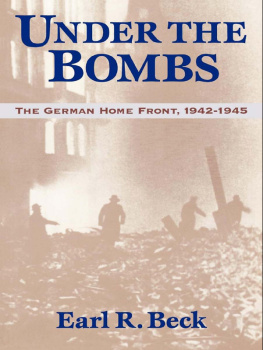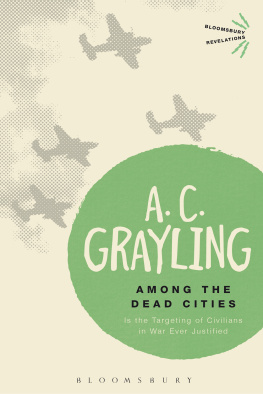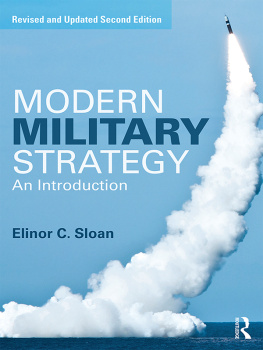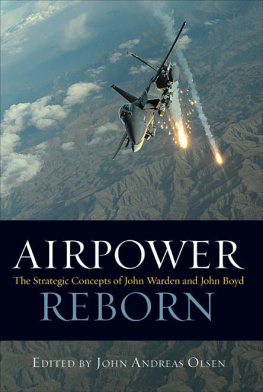2016 by the University Press of Kansas
All rights reserved
Photographs are from the USAF Photographic Collection, National Air and Space Museum, Smithsonian Institution, unless otherwise noted.
The views expressed herein are those of the author and do not purport to reflect the positions of the United States Military Academy, Department of the Army, or Department of Defense.
Published by the University Press of Kansas (Lawrence, Kansas 66045), which was organized by the Kansas Board of Regents and is operated and funded by Emporia State University, Fort Hays State University, Kansas State University, Pittsburg State University, the University of Kansas, and Wichita State University
Library of Congress Cataloging-in-Publication Data
Names: Crane, Conrad C., author.
Title: American airpower strategy in World War II : bombs, cities, civilians, and oil / Conrad C. Crane.
Other titles: Bombs, cities, civilians, and oil
Description: Lawrence, Kansas : University Press of Kansas, [2016]
Series: Modern war studies | Includes bibliographical references and index.
Identifiers: LCCN 2015044252
ISBN 9780700622092 (cloth : alk. paper) |
ISBN 9780700622108 (ebook)
Subjects: LCSH: World War, 19391945Aerial operations, American. | Bombing, AerialUnited States. | Air powerUnited StatesHistory20th century. | World War, 19391945Moral and ethical aspects.
Classification: LCC D790 .C69 2016 | DDC 940.54/4973dc23
LC record available at http://lccn.loc.gov/2015044252
British Library Cataloguing-in-Publication Data is available.
Printed in the United States of America
10 9 8 7 6 5 4 3 2 1
The paper used in this publication is recycled and contains 30 percent postconsumer waste. It is acid free and meets the minimum requirements of the American National Standard for Permanence of Paper for Printed Library Materials Z39.481992.
For Conrad L. Crane,
World War II veteran, mentor, father, and friend
PREFACE
There are two primary reasons that I asked the University Press of Kansas to allow me to revise and update my 1993 book Bombs, Cities, and Civilians: American Airpower Strategy in World War II. The first is that there has been much new scholarship in the more than two decades since the original book was published. Revealing work by Tami Biddle, Richard Davis, Rob Ehlers, Gian Gentile, Donald Miller, Richard Overy, Ken Werrell, and many others have unearthed much new information that requires reshaping my original arguments. I also uncovered new sources that needed to be incorporated into the revision during subsequent research for my second book with the University Press of Kansas that dealt with the Korean air war. In addition, my archive at the Army Heritage and Education Center was privileged to acquire the extensive operational records of the 44th Bomb Group of the Eighth Air Force, and a close examination of those files required me to adjust some of my conclusions about the conduct of the European bombing campaign, especially in its later stages.
The second reason goes back to the original title selection in 1993. My initial proposal to the press was for The Temptations of Total War, which I thought best reflected the concentration of the book on moral aspects of bombing civilians. However, the editors at Kansas felt differently, and as a new author I was not prepared to be combative over the title. The main title, Bombs, Cities, and Civilians, was fine, but the subtitle did not accurately depict what the book was about. I did not really analyze the whole development of US airpower strategy in the way that I did in my Korean air war book. Perhaps those editors were wiser than I, forcing me to realize in hindsight that my focus should have been broader. Clausewitz tells us that the amount of a nations resistance in war is a product of total means times strength of will. My original work focused primarily on the ways American airmen attacked the civilian will to resist, directly or indirectly. However, their main objective was always to destroy military and economic means or war-making capacity, which was seen as the surest way to end the bloody conflict as quickly as possible. The revised book deals more with the search for the panacea target system or systems that would really prove the efficacy of precision doctrine as well as make the biggest possible contribution to winning the war. Establishing that baseline also provides a better foundation to discuss the lures that distracted American airmen from their precision ideals and to demonstrate that such diversions were not unique to World War II.
The original inspiration for this book came from two questions. The first, asked by a professor during a graduate seminar at Stanford, focused on the precedents leading to the decision to drop the atomic bomb on Hiroshima and on why discussions about the new weapons employment dealt with how to use it, not whether to do so. The second, posed by a West Point cadet trying to understand the ethical restrictions on his actions in war, asked to what extent moral considerations and other limitations on combat can really be effective in a high-stakes, high-intensity conflict in a heavily populated area like Western Europe. In response to the first question, I believe that I have presented in this book many of the lures that drew American leaders and airmen down the path to total war in World War II, as well as away from the letter, if not the spirit, of precision doctrine. At the same time, I have also described how some leaders, for a variety of reasons, did slow the rush to unlimited aerial warfare. I hope that the material in this volume will provide future civilian and military leaders with some motivations and ideas about how to limit the slide toward total war in future conflicts.







 UNIVERSITY PRESS OF KANSAS
UNIVERSITY PRESS OF KANSAS